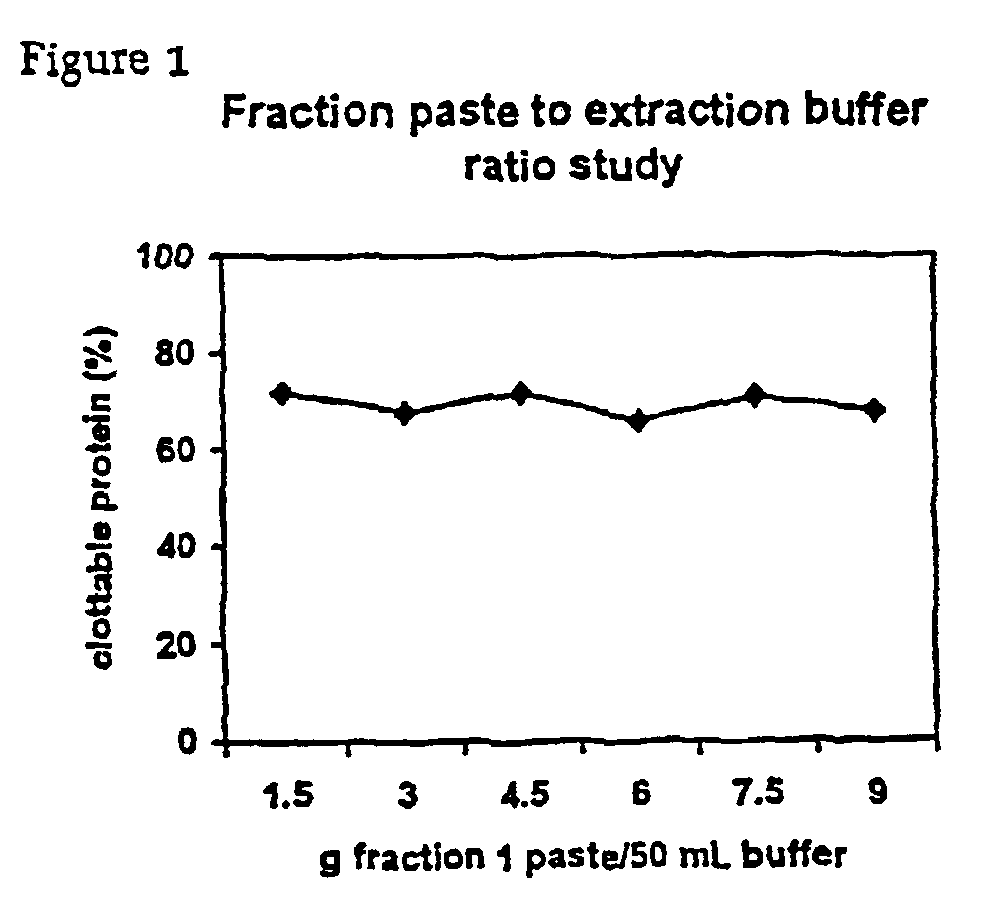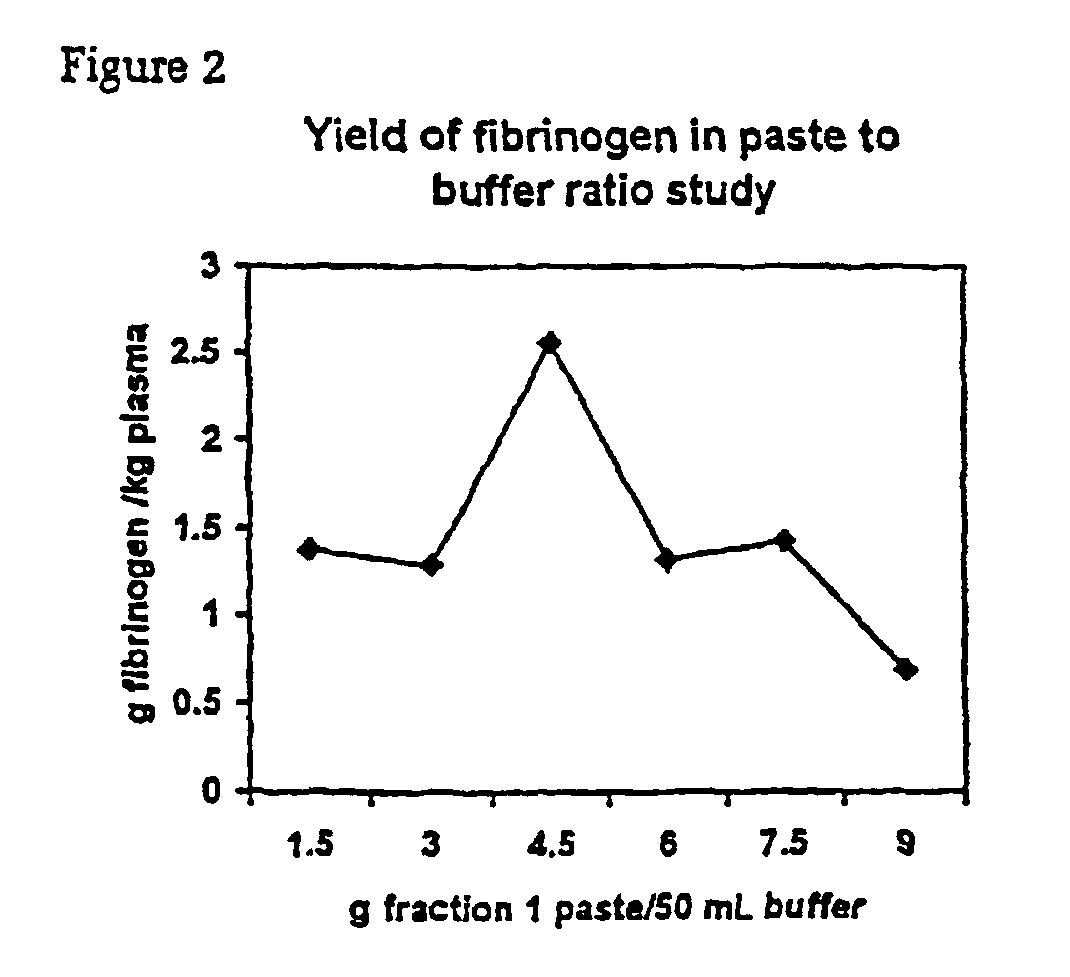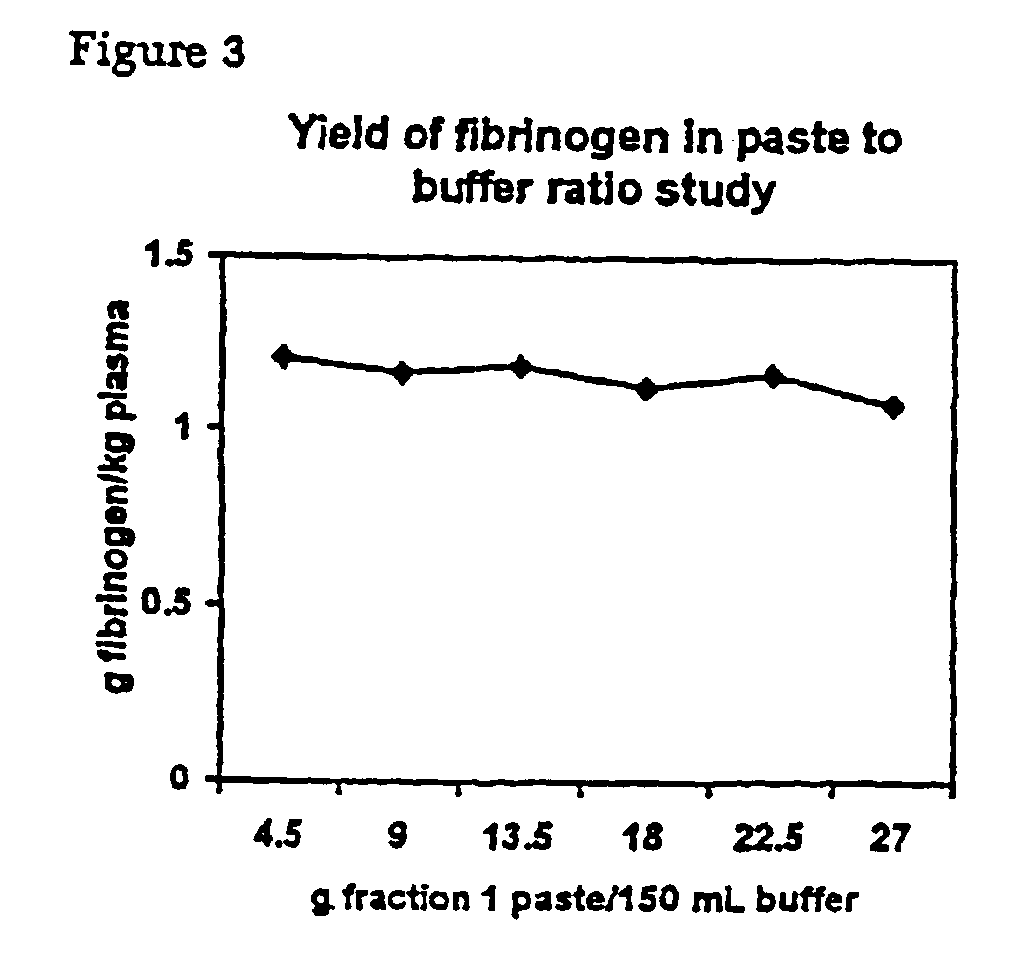Separation of fibrinogen from plasma proteases
a plasma protease and fibrinogen technology, applied in the field of purifying fibrinogen, can solve the problems of unexpectedly high yield of fibrinogen obtained by this process, and achieve the effects of simple manufacturing method, superior purity and stability, and high recovery ra
- Summary
- Abstract
- Description
- Claims
- Application Information
AI Technical Summary
Benefits of technology
Problems solved by technology
Method used
Image
Examples
example 1
Extraction of Fibrinogen from Fraction 1 Precipitate
1.1 Materials and Methods
1.1.1 Heparin Paste Extraction Procedure
[0079]Fraction I paste is extracted at a ratio of 1 g:8.33 g heparin paste extraction buffer unless stated otherwise. The extraction is performed at room temperature for 2 hours.
1.1.2 Heparin Paste Extraction Buffer
[0080]0.4 M NaCl,[0081]5 mM εACA,[0082]20 mM Na-citrate,[0083]pH 7.3.
1.1.3 Alhydrogel Absorption
[0084]A solution of 2% aluminium hydroxide Al(OH)3, also known as alhydrogel, is added to solubilised heparin paste superntant (SHP) at a concentration of 10.8%. The mixture is incubated with stirring for 15 minutes at room temperature, centrifuged for 10 minutes, and the pellet discarded.
1.1.4 Gly / NaCl Precipitation
[0085]The alhydrogel supernatant (ASFP) and Gly / NaCl buffer are heated to 30° C.±3° C. The supernatant is then added to the Gly / NaCl buffer, over 4.5 minutes, at a ratio of 1:2.05. The supernatant is then incubated at 30° C. with stirring for 20 mins,...
example 2
Separation of Fibrinogen from Plasminogen Using Ion-Exchange Chromatography
2.1 Materials and Methods
2.1.1 Sample Preparation
[0259]A Gly / NaCl precepitate was obtained from cryoprecipitate using a modification of the methods described in Winkleman et al., 1989. Initially, the frozen resolubilised Gly / NaCl precipitate (−80° C.) was thawed in a waterbath at 30° C. To 40 g of resolubilised Gly / NaCl precipitate was added 2.19 g of stock detergent solution and 132 mg of TNBP. The sample was then diluted using sample dilution buffer (25 mM Tris, pH 8.0) until the conductivity was below 10.5 mS / cm. Finally, the sample was filtered through a 0.8 μm membrane filter. Each sample was prepared immediately prior to the start of each run. Failure to dilute the sample often results in a large unbound peak i.e. some fibrinogen is eluted in the unbound.
2.1.2 MacroPrep HQ Purification
[0260]The following chromatographic conditions were used to purify the resolubilised gly / NaCl paste:[0261]Bed Height—app...
PUM
| Property | Measurement | Unit |
|---|---|---|
| Temperature | aaaaa | aaaaa |
| Electrical conductivity | aaaaa | aaaaa |
| Electrical conductivity | aaaaa | aaaaa |
Abstract
Description
Claims
Application Information
 Login to View More
Login to View More - R&D
- Intellectual Property
- Life Sciences
- Materials
- Tech Scout
- Unparalleled Data Quality
- Higher Quality Content
- 60% Fewer Hallucinations
Browse by: Latest US Patents, China's latest patents, Technical Efficacy Thesaurus, Application Domain, Technology Topic, Popular Technical Reports.
© 2025 PatSnap. All rights reserved.Legal|Privacy policy|Modern Slavery Act Transparency Statement|Sitemap|About US| Contact US: help@patsnap.com



